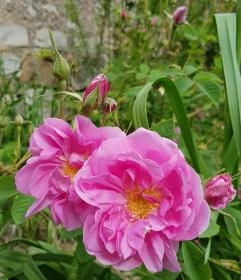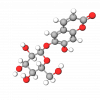Damask rose, also known as Rosa damascena, is one of the most important flowers in the Rosaceae family. Rose oil is a pale, yellow, and semisolid liquid obtained by distilling fresh flowers. It's very expensive, as only one part of the oil may be produced from 3000 parts of flower yield. Rose water contains 10% to 50% oil, so most formulations use water as a relatively cheaper ingredient.
Rosa damascena oil contains several groups of biologically active compounds, such as terpenes, glycosides, flavonoids, and anthocyanins. Here is a brief list of the most important substances: myrcene, Vitamin C, Kaempferol, and Quercetin. Damask rose has been used in food, medicine, and cosmetics for centuries, so its pharmacological profile is well-studied.
This adorable oil has antimicrobial, antioxidant, anti-inflammatory, and anti-aging effects. Rosa damascena has a wide spectrum of antimicrobial activities against many species of harmful bacteria. Like many other aromatic and medicinal flowers, it shows antioxidant properties. Rich in natural polyphenolic compounds and L-ascorbic acid (Vitamin C), Damask rose eliminates free radicals, protecting skin cell membranes from oxidation.











